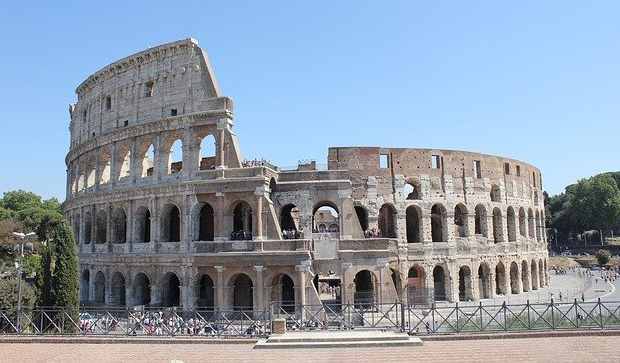Interesting Facts about the Roman Colosseum

With a history tracing back to 2000 years, the Colosseum is one of the most iconic landmarks in Italy. The arena witnessed many unforgettable moments throughout its history, from gladiator battles and execution of criminals and prisoners to hunts involving humans against animals. Visitors can go back in time and learn about the ancient Roman past. It’s an experience you have to tick off your bucket list. So, get your Italian visa from the best company, and start planning a trip to one of the most historical sites in the world. You are going to love it.
Why did they build the Colosseum?
After the fire which burned a large part of the city, the construction of a palace was ordered by Emperor Nero for himself. The name of the palace was Domus Aurea. The Roman citizens were not happy, so when Nero got deposed and Emperor Vespasian succeeded to the throne, he tore down Nero’s palace and ordered for the Colosseum to be built on top of an artificial lake. The Colosseum became a grand amphitheatre for the entertainment of Roman citizens. Originally, the Colosseum was named the Flavian Amphitheatre.
Ancient Romans had Free Entry
Unlike in today’s music or sporting events, the Colosseum allowed entry for free for ancient Romans. They also provided food throughout the event. It is said that this was done by the emperors to gain support and popularity in the Roman empire. It was important, as these events could last for around 100 days.
The Largest Amphitheatre
The amphitheatre is the largest in the world. It’s oval in shape, 189 metres long, 50 meters tall, and 156 meters wide. Today’s football pitches can easily fit inside the Colosseum. The Colosseum is among the seven wonders of the world, selected back in 2007. It had 80 entrances and allowed a capacity of approximately 50,000 spectators to watch the games or sporting events. The events included wild animal hunts, gladiator combat, and also ship naval battles.
Damaged by Earthquakes
Although the Colosseum has seen two-thirds of it destroyed over time by many natural disasters, it remains a popular site for tourists, attracting thousands of people from all over the world every year. The damage was mainly caused by two big earthquakes. Other than earthquakes, the Colosseum has also been damaged by vandalism and fires. These occurred in 847 and 1231 AD.
Arena of Death
Given the Colosseum, a place for some gruesome things, like gladiator contests and various battles over the years the Colosseum has seen lots of deaths. An estimate of around 400,000 people was killed in total, and around 10,000 animals were killed every day. It is said that the entire North Africa and Mediterranean region animals were wiped out. Different kinds of animals were slaughtered such as tigers, lions, bears, wolves, leopards, elephants, wild boar buffalo, hyena hippopotamus, giraffe, and crocodile. At some point, all of these species were seen in the arena.
Colosseum made of Travertine
The Colosseum was built of travertine stone, an estimate of 100,000 cubic metres was used. Also, Roman bricks, cement, and tuff blocks of a similar measure were used. Travertine is a type of limestone. In addition to all the different kinds of cement and stones used, around 300 tonnes of iron clamps were used to hold large blocks together.
In later centuries, these clamps were searched for when the Colosseum condition was neglected, leaving huge pockmarks in the walls which are recognizable today. To build this magnificent structure, tens of thousands of slave manpower was used.
The Hypogeum
The Colosseum’s Hypogeum means underground in English. The hypogeum was a network of chambers and tunnels where prisoners, animals, and gladiators were kept before they entered the arena. It had 80 vertical shafts to gain access to the arena, as well as trap doors. Through these scenery elements during spectacles could be deployed.
Wallcovering
The outer walls of the Colosseum are covered in columns of three called Doric, Corinthian, and Ionic, and 80 arches are included on each level. Out of these, 76 of them are numbered in Roman numerals which are still visible in some places above them. They were guides to help citizens find their seats. Only 31 arches remained intact from the ground level external wall, out of 80 arches. These are what visitors see when they visit today.
Thumbs up
The popular thumbs-up greeting or response actually originated from the Colosseum. It was used as a signal of death for the gladiator, via the jugular. Dead gladiators were taken out of the west exit, which is known as the Gate of Death.
The Colosseum is a favourite and famous tourist landmark for many and if you visit Rome or Italy, no trip is complete without visiting the Colosseum. This piece of history will never disappoint you. With many amphitheatres built in the Roman empire, neither are important and big as the Colosseum in Rome. So, you should make it a point to see the grandeur of this brilliant monument.
Pingback: Things to Do in Amalfi Coast - HolidaysTourTravel